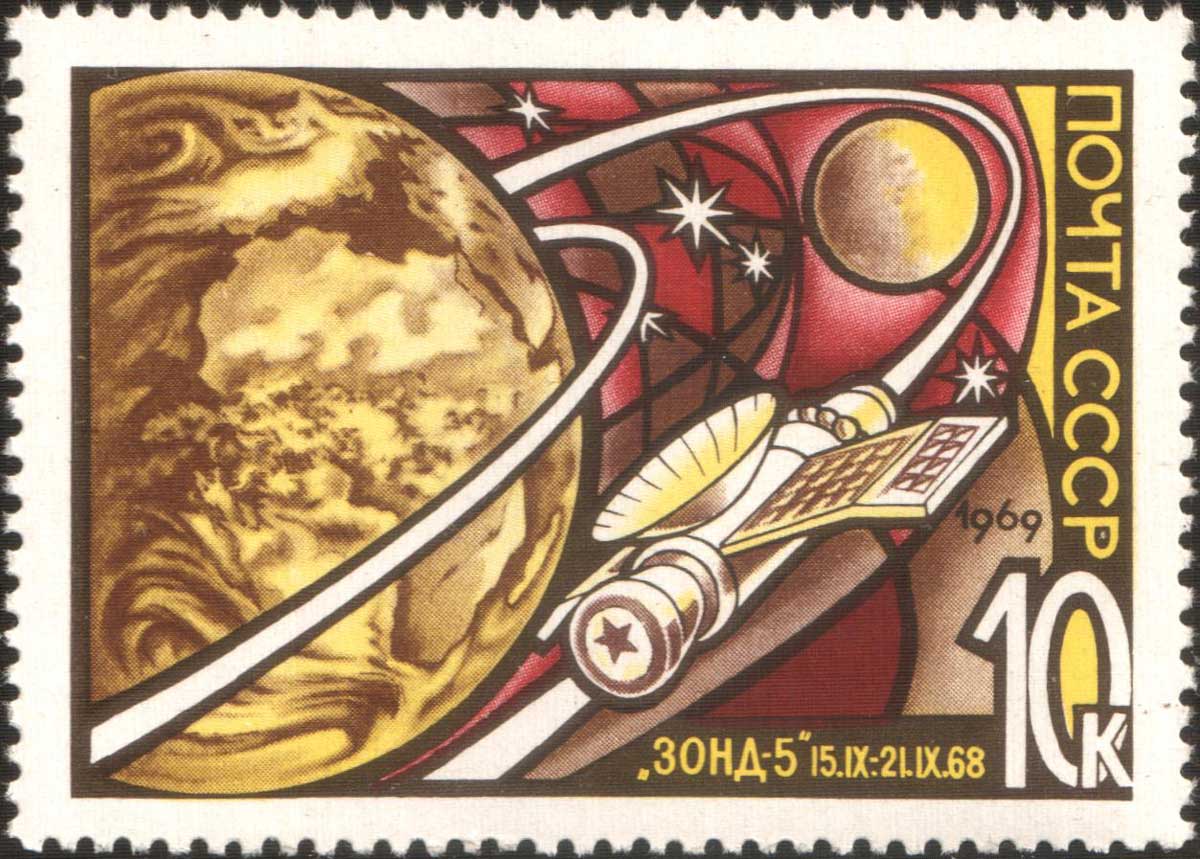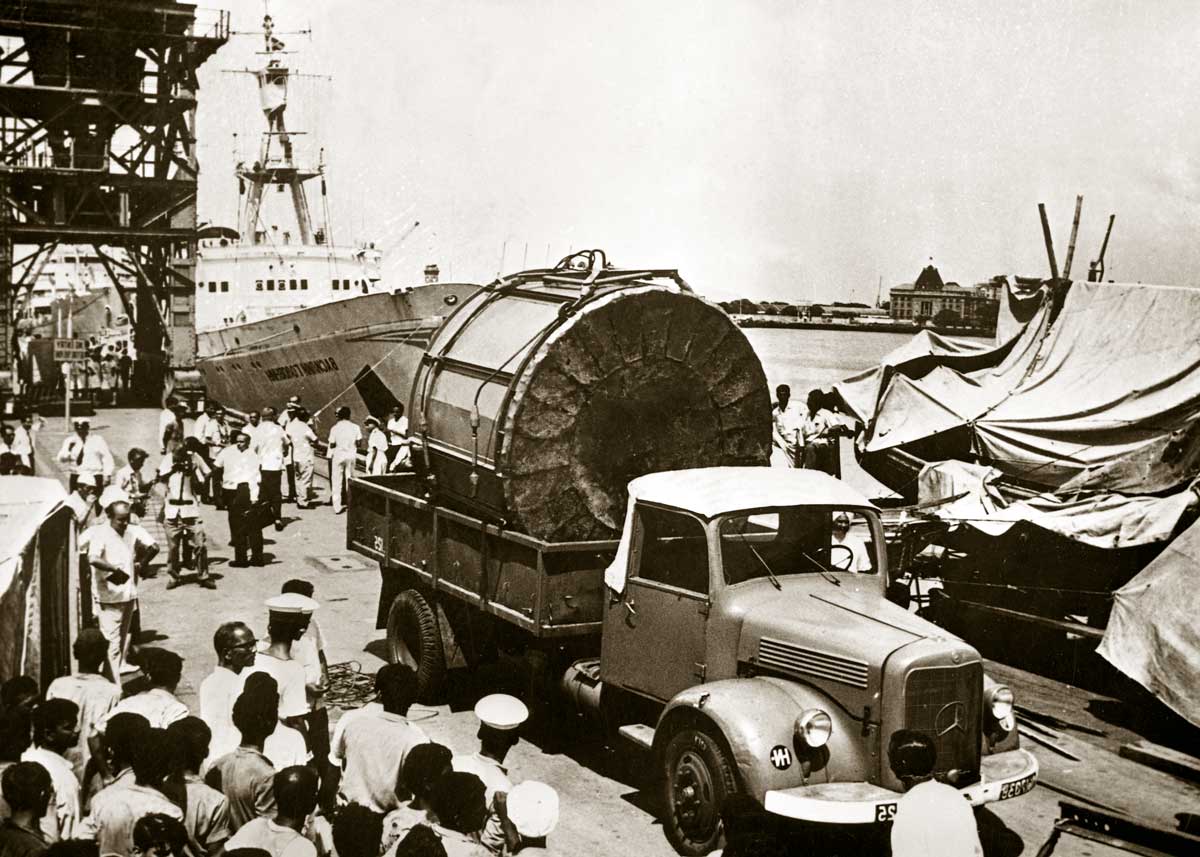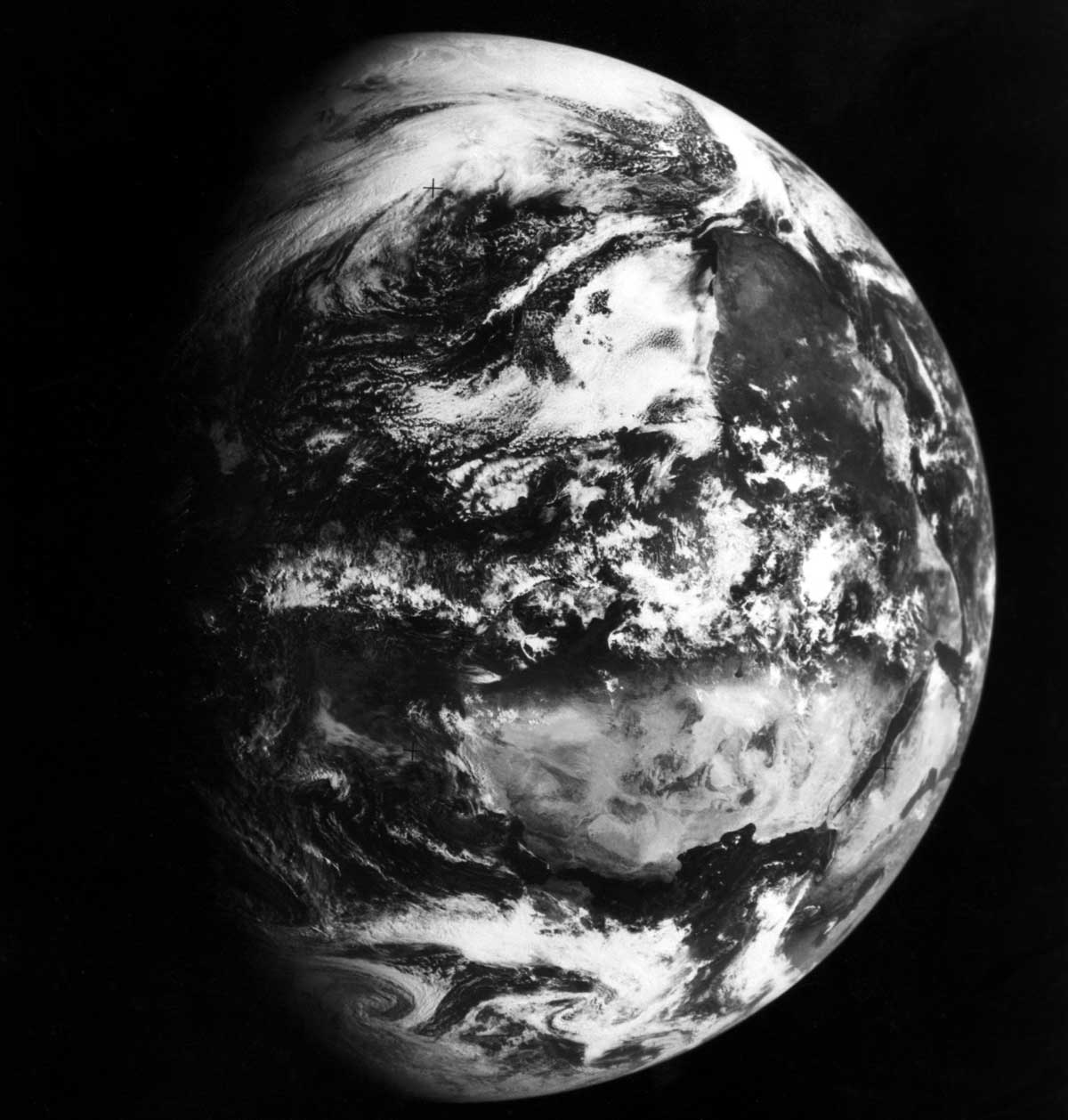One Giant Leap for Tortoise-Kind - 11 minutes read

On 17 September 1968 two Russian tortoises found themselves hurtling through space, almost 325,000km from Earth. Bobbing about weightlessly in narrow cages, they were hungry, thirsty and probably more than a little bemused. Just weeks before, they had been shuffling around on the Kazakh steppe, munching on shrubs and generally minding their own business. But now, on board the Soviet Zond 5 probe, they were boldly going where no tortoise had gone before – and would soon become the first terrestrial organisms to orbit the Moon.
The two tortoises – dubbed ‘22’ and ‘37’ – had come to spaceflight at a crucial moment in the space race.
For much of the 1950s the Soviet Union had outpaced the United States. Following the launch of Sputnik 1, the first artificial satellite, in 1957, they had racked up a dazzling array of achievements. In 1959 they had landed the first probe on the Moon; two years later, they had put the first man into space. Their lead seemed insurmountable. When, in 1961, President Kennedy committed the US to putting a man on the Moon within a decade, many of his own scientists were convinced that the Soviets would beat them to it.
But recently things had started to go wrong. Despite their early lead, the Soviets were suffering from a lack of focus. Whereas the Americans had made landing on the Moon their top priority, the Soviet programme was having to compete with other projects for funding and expertise. There were plans to send a mission to Mars and a tremendous effort was being devoted to lifting heavier and heavier payloads into orbit. Even to the design team, the reasons for this were hazy; but the orders had come down from on high, so they had no choice but to obey – with the result that the tortoise-like Soviets gradually started to lose their advantage.
Wake-up call
The successful launch of NASA’s Saturn 1 rocket on 29 January 1964 came as a wake-up call. Realising that the Americans were now pulling ahead, Sergei Korolev, the chief designer of the Soviet space programme, finally persuaded Nikita Khrushchev to put the Moon first. Korolev and his team made rapid advances. But even with the full weight of the Soviet economy behind them, they struggled to catch up. The main reason for this was organisational. Whereas the American programme was centrally planned and hierarchically managed, their Soviet counterparts seemed to be almost wilfully chaotic. Even at this late stage, there was no clear sense of leadership. Rival figures, jostling for primacy, constantly countermanded each other’s decisions. Korolev had to fight off a challenge from Vladimir Chelomey, the chief designer of aviation equipment. And bureaucratic wrangling held up even minor technical issues.
The Soviets didn’t lack determination, though. Just months after the Saturn 1 launch, the Zond programme was initiated to lay the groundwork for a Moon landing. The earliest missions were rather hastily adapted from a previous plan to explore the inner planets, designed merely to reconnoitre the terrain. A probe would zip past the Moon on its way to Mars, taking pictures as it went. The later missions were more ambitious, however. Their purpose was to test the feasibility of a moonshot itself – and they got off to a disastrous start. The first two rockets (Zond 1967A and B) crashed before reaching orbit. The third (Zond 4) made it around the Moon, but self-destructed when its re-entry went awry. The fourth (Zond 1968A) blew up four and a half minutes after take-off. The fifth (Zond 1968B) exploded on the launch pad, killing three people.
Zond 5 would either make or break the programme. After so many failures, the Soviet Union desperately needed to show that it was still in the Moon race, even though, by now, everyone knew there was almost no chance of it winning. The module was duly designed to carry human cosmonauts. But rather than put lives at risk, it was decided that it would be best to first test the craft on animals.

There was nothing new about this idea. Animals had already been sent into space dozens of times before. In fact, they had probably spent more time than humans in the big black. Since the beginning of space flight, they had been put aboard various vehicles to see whether human beings could survive the physical demands and to explore the physical effects of cosmic radiation, microgravity and the g-forces experienced at launch and re-entry. In each case, they were chosen either because of their overt physiological similarity to humans, or because of their more general suitability as ‘model’ organisms. Not all survived and many of those that did were killed and dissected.
The first animals in space were fruit flies, the most common model organisms. In 1947, they spent a total of three minutes above the Earth on board a V2 rocket. They were followed on 14 June 1949 by a rhesus monkey, implanted with various sensors, and on 31 August 1950 by a mouse. Dogs came next. The most famous was Laika, a stray Muscovite mongrel, who was blasted into space on Sputnik 2 on 3 November 1957 and became the first animal in orbit. Over the next 11 years, ten more dogs, eight primates, at least five rats, over 60 mice, several cats, a number of frogs, hundreds of fruit flies and one guinea pig were sent into space.
Space tortoises
Until then, tortoises had been stubbornly Earthbound – and would probably have been happy to remain so, had the scientists in charge of Zond 5 not started poking their noses into things. To be sure, the Russian tortoise (Agrionemys horsfieldii) was not the most obvious cosmonaut, even among animals. Slow by inclination and sluggish by temperament, they spend up to nine months a year in a dormant state – which, given that they only live for 40 or 50 years, is a lot. They couldn’t be trained to pull levers, like Enos the chimpanzee, whom the Americans had launched into space on 29 November 1961; nor could they easily be fitted with sensors, like Laika the dog. But they still had something going for them. As Soviet scientists later noted: ‘The organisation level in these animals is not much lower than in mammals.’ While they may not look particularly similar to human beings, their major organs – heart, lungs, liver, etc – actually weren’t all that different. They were also a lot easier to send into space than most other animals. Because they don’t move a lot and have a hard shell to boot, they could be strapped into the probe without any difficulty. And since they can happily go without food or water for long periods of time, there was no need to keep them fed either. Best of all, they were easy to find. They are indigenous to the region around the Baikonur Cosmodrome in southern Kazakhstan where Zond 5 would take off and could hence be caught as needed. Even if they weren’t ideal, they were still a pretty good choice.
In total, eight tortoises were used, all six-seven years old, and weighing between 340 and 400 grams. Two (22 and 37) would be in the module; two would serve as a control group; and four would be kept in a vivarium. Two months before the flight, they were all taken to a laboratory. There, they were examined, weighed and placed on a strict diet of meat, cabbage, carrots and bread. A little under two weeks before the launch, 22 and 37 were put into narrow cages on board the module. At the same time, the two control tortoises were put into identical constraints and taken to the cosmodrome. From then on, both groups were deprived of food or water, to ensure that the only physical effects experienced would be those of space flight. Those in the vivarium, meanwhile, took it easy.
Nerve-jangling moment
At 42 minutes past midnight on 15 September 1968, Zond 5 blasted off. Along with the two tortoises, there were some fruit fly eggs, some seeds, a plant and a culture of lysogenic bacteria. Unlike the previous Zond missions, the take-off went without a hitch. Soaring through the atmosphere, the module entered orbit around the Earth and prepared to begin its journey to the Moon. Just 67 minutes after launch, however, a star tracker attached to the altitude control system failed. As the probe began to drift off course, the whole mission seemed to be in jeopardy. Before it was too late, mission controllers managed to correct its path using two other, marginally less accurate sensors, which relied on the Sun and the Earth for reference – but it had been a nerve-jangling moment, including for the tortoises.
On 18 September, Zond 5 successfully orbited the Moon at an altitude of 1,950km. As it did so, it took a series of spectacular photographs of the far side’s surface. Gradually accelerating under the Moon’s gravity, it was then slung back towards the Earth. On the way, Soviet controllers, relieved that all was going well, engaged in a bit of horseplay. Aware that the Americans were listening in to their communications, they worked out a way to have their voices broadcast back to them from space, so that it would seem as if they were actually on board the module. After reading out a few telemetry readings, they then began talking about attempting a landing. The Americans nearly jumped out of their skins. Fearing that the Moon race was about to be lost, President Johnson even telephoned NASA to find out what was going on, only to find out much later that it had all been a hoax.

As the module approached Earth, a second altitude control sensor failed, prompting the onboard computer to shut off the re-entry system, which controllers had been relying on to guide the tortoises home. Its trajectory was already off and the chances of it being recovered at all – let alone intact – were slim. Entering the atmosphere at a speed of 11,000 metres per second on the evening of 21 September, the outer casing reached a temperature of 13,000°C. Inside, the tortoises experienced g-forces of almost 20g, more than enough to kill a human being. At 7:08pm, the module slammed into the Indian Ocean, thousands of kilometres away from its planned landing site in Kazakhstan – and a long way from the nearest ship.
It took four days for the Soviet navy to recover it. To everyone’s surprise – and their inestimable relief – the tortoises were still alive. On 3 October, they reached Mumbai and on 7 October they arrived back in Moscow. In contrast to Yuri Gagarin, they were not given a hero’s welcome. No crowds cheered their return and no medals were pinned on their shells. They didn’t even get so much as a square meal.
Four days later, they were euthanised and dissected along with the control group and the tortoises in the vivarium. Remarkably, they seemed to have suffered no ill effects from their time in space. They had been exposed to very little radiation and, while their livers seemed to have changed colour a bit, they had not lost much more weight than the others. The only noticeable difference seemed to be in the thickness of their intestines and their seminal vesicles; but beside that, they had been in excellent health – all of which boded tremendously well for any cosmonauts making the same journey in future.
Gigantic shuffle
As it turned out, the Soviets never made it to the Moon. Just ten months later, the American Apollo 11 mission beat them to it. But the two tortoises were heroes nonetheless. For while theirs was only a small step in the journey of space flight, it was surely a gigantic shuffle for tortoise-kind.
Alexander Lee is a fellow in the Centre for the Study of the Renaissance at the University of Warwick. His latest book, Machiavelli: His Life and Times, is now available in paperback.
Source: History Today Feed